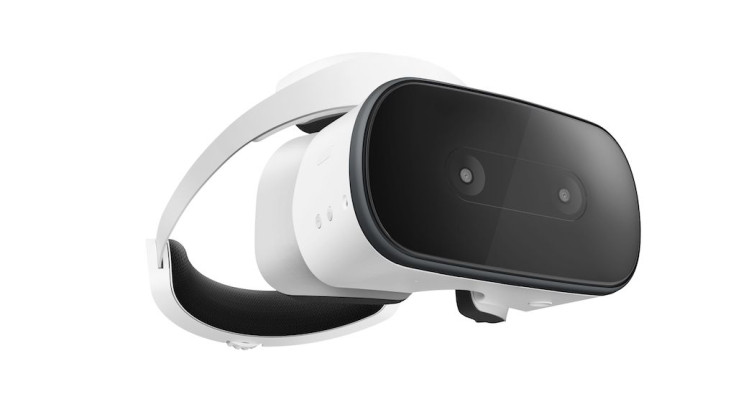Lenovo At CES: Mirage Solo Google Daydream VR Headset Price, Release Date Unveiled

Lenovo has announced the Mirage Solo, a new standalone VR headset powered by Google’s Daydream VR platform. The Lenovo Mirage Solo is expected to ship sometime during the second quarter of 2018 and will cost somewhere below $400.
During last year’s I/O conference, Google promised that standalone Daydream VR headsets will arrive from its partners, one of which is Lenovo. The Mirage Solo signals Google’s desire to push its own VR platform by making standalone VR headsets that don’t require an Android smartphone to work.
The Lenovo Mirage is being powered by Qualcomm’s Snapdragon 835 processor with 4GB of RAM and 64GB of storage. It also has a microSD card slot for expanding storage and a 3.5mm headphone jack for audio. The VR headset doesn’t come with its own speakers or built-in set of headphones.
The Mirage Solo comes with 5.5-inch LCD displays with each having a screen resolution of 1,280x1,440 per eye. Since this VR headset is a standalone device, it also comes with its own internal battery. Lenovo says that the headset has a 4,000mAh battery and claimed that it will be able to deliver 7 hours of battery life.
Google’s Daydream View headset may have been small and light, the Mirage Solo isn’t. Measuring 8.03 x 10.61 x 7.08 and weighing 1.42 pounds, it will take up more space. However, Lenovo was able to balance out the Mirage Solo’s weight that it doesn’t actually feel heavy when users wear it, as pointed out by Engadget.
Since the Lenovo Mirage Solo is based on Google Daydream, it fully supports all of the existing experiences that are already available for the Google Daydream View VR headset. Google also announced a new game for the Mirage Solo that’s based on the “Blade Runner” films.
Additionally, the Mirage Solo supports Google’s WorldSense tracking, which means users will be able to actually walk around and interact with the virtual environment. For example, wearers of the Mirage Solo will be able to dodge or duck in real life in order to dodge and duck inside the virtual world.
The Mirage Solo has a pair of front-facing cameras to make the WorldSense tracking possible. The play space of WorldSense has a diameter of around 5 feet (1.5 meters), according to The Verge. Although that’s impressive for a standalone VR headset, it’s still vastly limited when compared to the high-end HTC Vive, which lets users move around up to 16 feet diagonally.
The Lenovo Mirage Solo also comes with its own motion-sensitive remote which will function as the controller for some games and experiences. Unfortunately, the VR headset doesn’t have motion controller tracking, which would have paired well with WorldSense.
Overall, the Lenovo Mirage Solo looks to be a promising standalone VR headset. It’s a more affordable option than the high-end Oculus Rift and the HTC Vive, but it might be a bit more expensive than the $199 Oculus Go. The Oculus Go is also a standalone VR headset, but it doesn’t actually feature inside-out tracking.
© Copyright IBTimes 2025. All rights reserved.




















